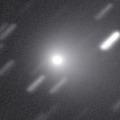
|
It became much brighter than expected. Now it is so bright as 8.7 mag (Aug. 23, Willian Souza). It keeps bright as 8-9 mag until autumn. In the Southern Hemisphere, it will keep observable in good condition for a long time until 2014 summer when the comet fades out. It will never be observable again in the Northern Hemisphere.
Date(TT) R.A. (2000) Decl. Delta r Elong. m1 Best Time(A, h)
Aug. 24 8 5.87 -5 34.2 2.159 1.459 35 8.6 5:05 (265, 17)
Aug. 31 8 23.61 -10 12.0 2.123 1.469 38 8.6 4:56 (268, 20)
|

|
It approached to the sun down to 0.73 A.U. on Mar. 24, and brightened up to 4.7 mag (Mar. 11, Michael Mattiazzo). Now it is fading. But it is still bright as 11.0 mag (Aug. 16, A. Novichonok). In the Northern Hemisphere, it keeps observable in good condition while fading gradually. In the Southern Hemisphere, it will never be observable again.
Date(TT) R.A. (2000) Decl. Delta r Elong. m1 Best Time(A, h)
Aug. 24 19 47.09 68 54.9 2.294 2.601 95 10.1 21:33 (180,-14)
Aug. 31 19 21.80 67 15.4 2.383 2.690 96 10.3 20:41 (180,-12)
|

|
The condition is worst and the comet will be hardly observable in this apparition. In the Northern Hemisphere, it will be observable in autumn when the comet will be fainter than 16 mag.
Date(TT) R.A. (2000) Decl. Delta r Elong. m1 Best Time(A, h)
Aug. 24 9 26.02 19 57.7 2.171 1.215 14 11.3 5:05 (255,-14)
Aug. 31 9 51.07 18 30.9 2.211 1.262 14 11.7 4:56 (257,-14)
|

|
Appearing in the morning sky in the Northern Hemisphere. Now it is 13.5 mag (Aug. 17, Michael Jager). It is expected to be a great comet in 2013 autumn when the comet approaches to the sun down to only 0.01 A.U. It keeps visible with naked eyes from November to January, and can be extremely bright as Venus or more at the highlight. However, the brightening has declined at 15.5 mag from January through May in 2013. The condition is excellent in the Northern Hemisphere. It keeps observable almost all through the period of brightening, at the highlight, and of fading. The condition is not good in the Southern Hemisphere. It is not observable at all the latter part of the highlight, and it keeps low all through the period.
Date(TT) R.A. (2000) Decl. Delta r Elong. m1 Best Time(A, h)
Aug. 24 8 30.20 22 58.2 3.163 2.307 26 11.6 5:05 (245, -5)
Aug. 31 8 40.36 22 14.2 2.995 2.194 31 11.3 4:56 (244, -3)
|
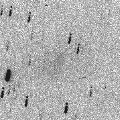
|
It will approach to the Sun down to 0.9 A.U., and to the Earth down to 0.4 A.U. in September. So it was expected to brighten up to 11-12 mag. However, it looked extremely diffuse on July 12 by Michael Jager. So the comet can be already disintegrated. No observations have been reported after that. In the Northern Hemisphere, it keeps observable in good condition until mid September. In the Southern Hemisphre, it will getting higher after August, and it keeps observable in good condition after that.
Date(TT) R.A. (2000) Decl. Delta r Elong. m1 Best Time(A, h)
Aug. 24 14 46.40 16 12.1 0.552 0.941 66 12.4 18:59 (140, 29)
Aug. 31 15 4.89 4 44.8 0.476 0.929 66 12.1 19:04 (128, 37)
|

|
New bright comet discovered in the extremely low sky at dawn. Now it is 10.8 mag (Aug. 3, Bob King). It keeps 11-13 mag until autumn, but it keeps locating extremely low in the morning sky. It is not observable until November in the Southern Hemisphere. Juan Jose Gonzalez reported it is so bright as 8.8 mag on Aug. 18.
Date(TT) R.A. (2000) Decl. Delta r Elong. m1 Best Time(A, h)
Aug. 24 9 7.91 28 41.0 2.076 1.211 22 12.4 5:05 (245,-15)
Aug. 31 9 31.11 24 40.8 2.091 1.220 22 12.5 4:56 (249,-13)
|
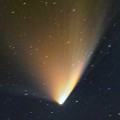
|
It passed the perihelion on Mar. 10, and brightened up to 0-1 mag. Now it is fading. It has already faded down to 11.7 mag (Aug. 5, Sandor Szabo). It is observable in good condition in the Northern Hemisphere. It will be observable in the extremely low sky from mid August to mid September also in the Southern Hemisphere.
Date(TT) R.A. (2000) Decl. Delta r Elong. m1 Best Time(A, h)
Aug. 24 14 58.63 42 49.6 3.273 3.061 69 12.4 18:59 (156, 7)
Aug. 31 15 4.72 40 36.7 3.410 3.153 66 12.7 19:04 (151, 6)
|

|
It will approach to the sun down to 0.8 a.u. on Aug. 6. Brightening very rapidly. Now it is so bright as 13.2 mag (Aug. 3, Taras Prystavski). In the Southern Hemisphere, it keeps observable at 13 mag in good condition in the evening sky until September. It is not observable in the Northern Hemisphere.
Date(TT) R.A. (2000) Decl. Delta r Elong. m1 Best Time(A, h)
Aug. 24 13 14.53 -21 29.0 0.720 0.847 55 13.2 18:59 ( 88, 38)
Aug. 31 13 53.01 -28 6.9 0.670 0.889 59 13.5 19:04 ( 81, 42)
|

|
Now it is 12.3 mag (Aug. 5, Sandor Szabo). It keeps bright at 13-14 mag for a long time until 2014. It keeps observable for a long time in the Northern Hemisphere. It locates somewhat low in the Southern Hemisphere.
Date(TT) R.A. (2000) Decl. Delta r Elong. m1 Best Time(A, h)
Aug. 24 19 42.43 26 9.9 5.263 5.939 127 13.2 21:30 (180, 29)
Aug. 31 19 36.56 24 46.2 5.311 5.944 124 13.2 20:57 (180, 30)
|

|
It brightened up to 12 mag in 2012. It is bright as 13.3 mag still now (July 1, Hidetaka Sato). It keeps 13-14 mag until autumn. It locates somewhat low in the Northern Hemisphere.
Date(TT) R.A. (2000) Decl. Delta r Elong. m1 Best Time(A, h)
Aug. 24 19 14.46 -36 33.0 2.304 3.082 132 13.5 21:03 ( 0, 88)
Aug. 31 19 13.98 -36 29.7 2.388 3.095 126 13.7 20:35 ( 0, 89)
|

|
Big asteroid discovered in 1906. It suddenly showed the cometary activity on Dec. 11, 2010, probably due to an impact of a small object. It has already turned to be stellar.
Date(TT) R.A. (2000) Decl. Delta r Elong. m1 Best Time(A, h)
Aug. 24 1 3.21 -14 39.3 2.185 3.014 138 13.8 2:55 (180, 70)
Aug. 31 1 0.14 -15 20.0 2.146 3.025 144 13.7 2:24 (180, 70)
|

|
It brightened up to 11-12 mag in 2012. Now it is bright as 13.7 mag (July 24, Taras Prystavski). It will be unobservable soon in the Northern Hemisphere. It keeps observable until September in the Southern Hemisphere.
Date(TT) R.A. (2000) Decl. Delta r Elong. m1 Best Time(A, h)
Aug. 24 13 10.87 -10 13.9 6.931 6.321 49 13.7 18:59 ( 99, 30)
Aug. 31 13 11.60 -10 23.9 7.052 6.351 42 13.7 19:04 ( 94, 24)
|

|
Now it is 14.5 mag (June 11, Sandor Szabo). It keeps 13 mag and observable in good condition in the Northern Hemisphere for a long time from 2013 to 2014. But it locates low in July and August. In the Southern Hemisphere, it is not observable until 2014 autumn.
Date(TT) R.A. (2000) Decl. Delta r Elong. m1 Best Time(A, h)
Aug. 24 9 52.18 53 9.1 4.312 3.627 42 13.8 5:05 (225,-33)
Aug. 31 9 59.56 53 55.3 4.237 3.607 45 13.7 4:56 (223,-31)
|
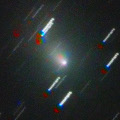
|
Now it is so bright as 11.2 mag (July 3, Con Stoitsis). It will be fading after this. In the Southern Hemisphere, it keeps observable for a long time until the comet fades out, although it keeps locating low. It will never be observable again in the Northern Hemisphere.
Date(TT) R.A. (2000) Decl. Delta r Elong. m1 Best Time(A, h)
Aug. 24 9 25.03 -38 44.3 2.569 2.088 51 13.7 5:05 (304, 19)
Aug. 31 9 45.41 -41 37.8 2.625 2.151 51 13.9 4:56 (307, 20)
|

|
Now it is bright as 12.2 mag (July 24, Taras Prystavski).
Date(TT) R.A. (2000) Decl. Delta r Elong. m1 Best Time(A, h)
Aug. 24 13 52.53 -20 58.4 6.590 6.199 63 14.0 18:59 ( 94, 45)
Aug. 31 13 56.46 -21 11.2 6.683 6.197 57 14.1 19:04 ( 90, 39)
|

|
Now it is 14.1 mag and visible visually (Aug. 11, Todd Augustyniak). It is expected to brighten up to 5-6 mag in 2014 autumn. In 2013, it keeps observable in good condition until autumn when it brigthens up to 13-14 mag.
Date(TT) R.A. (2000) Decl. Delta r Elong. m1 Best Time(A, h)
Aug. 24 15 38.23 17 38.9 4.916 4.823 78 14.3 18:59 (154, 33)
Aug. 31 15 36.69 16 55.7 4.948 4.754 73 14.2 19:04 (145, 30)
|
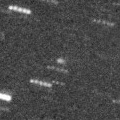
|
First return of a new periodic comet discovered in 1998. It brightened up to 10 mag at the discovery. Now it is 16.5-17.0 mag (Aug. 17, Michael Jager). In the Northern Hemisphere, it keeps observable in excellent condition from autumn to spring. It locates somewhat low in the Southern Hemisphere.
Date(TT) R.A. (2000) Decl. Delta r Elong. m1 Best Time(A, h)
Aug. 24 5 9.91 39 23.5 2.968 2.819 71 14.6 5:05 (202, 11)
Aug. 31 5 22.03 39 48.1 2.851 2.781 75 14.4 4:56 (201, 11)
|
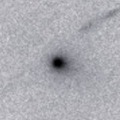
|
Brightening very rapidly. It was so faint, fainter than 20.5 mag, on July 6 (Hidetaka Sato). But it has already brightened up to 16.2 mag (Aug. 18, J. F. Hernandez). It is expected to reach up to 10 mag from autumn to winter. In the Northern Hemipshere, it keeps observable in excellent condition until the comet fades out. In the Southern Hemisphere, it keeps observable in good condition within 2013, but it will not be observable in 2014.
Date(TT) R.A. (2000) Decl. Delta r Elong. m1 Best Time(A, h)
Aug. 24 22 43.69 -14 49.6 0.995 2.000 171 15.0 0:36 (180, 70)
Aug. 31 22 35.85 -13 48.6 0.951 1.958 174 14.5 0:01 (180, 69)
|

|
Now it is 15.0 mag and visible visually (Aug. 5, Sandor Szabo). It brightens up to 14 mag in July and August. In the Southern Hemisphere, it keeps observable for a long time until the comet fades out. It keeps observable in good condition until September also in the Northern Hemisphere.
Date(TT) R.A. (2000) Decl. Delta r Elong. m1 Best Time(A, h)
Aug. 24 18 50.87 -24 12.5 1.519 2.310 130 14.5 20:38 (180, 79)
Aug. 31 18 34.18 -28 1.7 1.633 2.308 119 14.7 19:54 (180, 83)
|
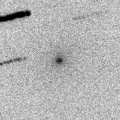
|
It brightened very rapidly near the perihelion as predicted, and reached up to 13.5 mag (Aug. 11, Todd Augustyniak). It will fade out very rapidly after this, and will be fainter than 18 mag in mid September.
Date(TT) R.A. (2000) Decl. Delta r Elong. m1 Best Time(A, h)
Aug. 24 14 24.51 2 58.3 1.332 1.258 63 14.7 18:59 (126, 36)
Aug. 31 14 52.52 1 54.3 1.381 1.303 63 16.0 19:04 (124, 36)
|
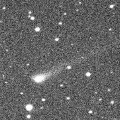
|
Now it is 14.3 mag (July 8, Chris Wyatt). It keeps bright as 13-14 mag for a long time from 2013 to 2014.
Date(TT) R.A. (2000) Decl. Delta r Elong. m1 Best Time(A, h)
Aug. 24 14 36.65 -15 17.7 3.418 3.230 70 14.8 18:59 (110, 51)
Aug. 31 14 43.73 -16 1.8 3.497 3.219 65 14.9 19:04 (104, 46)
|
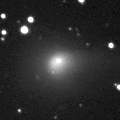
|
Fading slowly. Now it is 14.2 mag (Aug. 4, Todd Augustyniak). It keeps locating in the morning sky for a long time.
Date(TT) R.A. (2000) Decl. Delta r Elong. m1 Best Time(A, h)
Aug. 24 1 22.36 7 23.7 1.899 2.655 129 15.1 3:14 (180, 47)
Aug. 31 1 19.80 6 11.1 1.901 2.726 136 15.2 2:44 (180, 49)
|
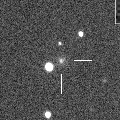
|
It is expected to brighten up to 11 mag and become observable in excellent condition in 2014 spring. In the Northern Hemisphere, it keeps extremely low in August and September. But it will be getting higher gradually in the morning sky after October. In the Southern Hemisphere, it is not observable until 2014 February.
Date(TT) R.A. (2000) Decl. Delta r Elong. m1 Best Time(A, h)
Aug. 24 10 58.52 32 37.2 3.697 2.804 24 15.3 18:59 (116,-20)
Aug. 31 11 11.90 31 50.1 3.625 2.738 24 15.2 19:04 (114,-23)
|

|
Now it is 17.3 mag (Aug. 18, A. Klotz, F. Kugel). It will pass the perihelion on Nov. 21, and will brighten up to 7 mag. In the Northern Hemisphere, it keeps observable in excellent condition while the comet is brightening rapidly in the morning sky. In the Southern Hemisphere, it is observable only until early October.
Date(TT) R.A. (2000) Decl. Delta r Elong. m1 Best Time(A, h)
Aug. 24 3 40.82 31 3.6 1.328 1.678 90 16.0 5:05 (186, 24)
Aug. 31 3 59.67 33 7.3 1.177 1.590 92 15.2 4:56 (186, 22)
|
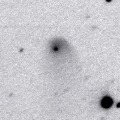
|
Now it is 16.4 mag (Aug. 7, K. Hills). It keeps 15 mag in 2013. But it is fainter than this ephemeris recently. It is observable in good condition in the Southern Hemisphere. It will be observable in good condition also in the Northern Hemisphere after August.
Date(TT) R.A. (2000) Decl. Delta r Elong. m1 Best Time(A, h)
Aug. 24 4 12.75 -24 10.6 6.815 6.963 94 15.2 5:05 (233, 73)
Aug. 31 4 12.31 -24 25.2 6.761 6.993 99 15.2 4:56 (221, 76)
|
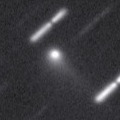
|
Now it is 14.3 mag and visible visually (Aug. 4, Todd Augustyniak). It keeps observable in excellent condition at 15 mag from summer to autumn.
Date(TT) R.A. (2000) Decl. Delta r Elong. m1 Best Time(A, h)
Aug. 24 21 18.02 2 54.4 1.168 2.148 160 15.5 23:06 (180, 52)
Aug. 31 21 14.46 3 28.2 1.187 2.149 156 15.6 22:35 (180, 51)
|
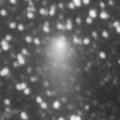
|
It kept bright as 11-13 mag for a long time from 2012 summer to 2013 summer. It will be fading after this. Now it is 14.8 mag (July 8, Sandor Szabo). In the Northern Hemisphere, it keeps observable for a long time until the comet fades out. In the Southern Hemisphere, it becomes low in late August, then it will be hardly observable.
Date(TT) R.A. (2000) Decl. Delta r Elong. m1 Best Time(A, h)
Aug. 24 13 28.65 20 32.5 4.591 3.988 48 15.8 18:59 (128, 14)
Aug. 31 13 32.30 20 25.8 4.715 4.047 43 15.9 19:04 (123, 9)
|
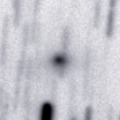
|
It brightened up to 2 mag by unusual major outburst in 2007. It will return in 2014. It will be 14 mag at best by normal prediction. But actually, it is brighter than predicted. It has already brightened up to 15.6 mag (Aug. 3, Taras Prystavski).
Date(TT) R.A. (2000) Decl. Delta r Elong. m1 Best Time(A, h)
Aug. 24 16 58.60 -40 4.1 2.141 2.609 106 16.2 18:59 ( 23, 85)
Aug. 31 17 3.96 -39 3.7 2.195 2.580 100 16.1 19:04 ( 59, 81)
|

|
Outbursts occured repeatedly in this apparition. Another outburst occured in late July. Now it is very bright as about 13.1 mag (Aug. 3, Taras Prystavski). It will not be observable after this in the Northern Hemisphere. It will be getting lower gradually in the Southern Hemisphere, and will be unobservable in October.
Date(TT) R.A. (2000) Decl. Delta r Elong. m1 Best Time(A, h)
Aug. 24 12 58.81 -18 26.0 2.853 2.348 50 16.3 18:59 ( 89, 33)
Aug. 31 13 11.81 -20 0.2 2.944 2.385 47 16.6 19:04 ( 85, 29)
|

|
Now it is 17.2 mag (Aug. 5, D. buczynski). It will be observable at 16 mag in good condition in summer and autumn.
Date(TT) R.A. (2000) Decl. Delta r Elong. m1 Best Time(A, h)
Aug. 24 0 32.86 22 3.0 1.410 2.217 131 16.4 2:24 (180, 33)
Aug. 31 0 32.35 21 18.9 1.372 2.233 138 16.4 1:56 (180, 34)
|
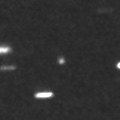
|
Now it is 16.8 mag (July 24, Hidetaka Sato). It is expected to brighten up to 7.5 mag and to be observable in excellent condition from summer to autumn in 2014 in the Southern Hemisphere. The condition is bad in the Northern Hemisphere. It will pass extremely close to Mars in 2014 October.
Date(TT) R.A. (2000) Decl. Delta r Elong. m1 Best Time(A, h)
Aug. 24 5 36.13 -19 34.7 5.383 5.203 74 16.5 5:05 (253, 55)
Aug. 31 5 37.19 -20 38.3 5.231 5.139 79 16.4 4:56 (250, 59)
|

|
It brightened up to 9.0 mag in 2012 autumn (Nov. 4, Juan Jose Gonzalez). However, it faded out unexpectedly around the perihelion passage. Now it is fainter than originally predicted by 4-5 mag. Now it is 17.4 mag (Aug. 8, A. Maury, J. F. Soulier). In the Southern Hemisphere, it keeps observable in good condition while fading slowly after this. In the Northern Hemisphere, it will not be observable after this.
Date(TT) R.A. (2000) Decl. Delta r Elong. m1 Best Time(A, h)
Aug. 24 4 5.81 -48 45.5 2.950 3.269 99 16.5 5:05 (329, 73)
Aug. 31 4 6.53 -49 43.6 2.980 3.332 101 16.6 4:56 (340, 74)
|
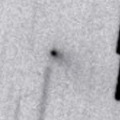
|
Now it is 17.5 mag (Aug. 16, Michael Jager). It will brighten up to 17 mag and will be observable in good condition from summer to autumn.
Date(TT) R.A. (2000) Decl. Delta r Elong. m1 Best Time(A, h)
Aug. 24 0 34.32 16 31.7 1.120 1.970 135 16.9 2:26 (180, 38)
Aug. 31 0 29.33 19 6.1 1.080 1.968 140 16.8 1:54 (180, 36)
|

|
It brightened up to 12-13 mag from autumn to winter in 2012. Now it is about 14.9 mag (Aug. 3, Taras Prystavski). It will be fading after this. But it keeps observable for a long time until the end of 2013 when the comet becomes fainter than 18 mag.
Date(TT) R.A. (2000) Decl. Delta r Elong. m1 Best Time(A, h)
Aug. 24 5 48.13 12 14.0 4.337 4.003 64 16.8 5:05 (225, 30)
Aug. 31 5 53.67 11 27.7 4.282 4.043 69 16.9 4:56 (222, 33)
|
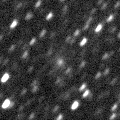
|
Now it is 16.4 mag (July 12, W. Hasubick). It will be fading after this, and will be fainter than 18 mag in late October.
Date(TT) R.A. (2000) Decl. Delta r Elong. m1 Best Time(A, h)
Aug. 24 18 23.04 -6 2.6 2.391 3.066 123 17.0 20:12 (180, 61)
Aug. 31 18 25.10 -6 22.8 2.483 3.083 117 17.1 19:46 (180, 61)
|
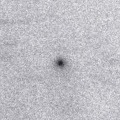
|
Now it is 17.1 mag (July 12, Hidetaka Sato). In the Southern Hemisphere, it keeps observable in good condition for a long time while fading gradually. It is not observable at all in the Northern Hemisphere.
Date(TT) R.A. (2000) Decl. Delta r Elong. m1 Best Time(A, h)
Aug. 24 5 46.05 -42 2.2 5.069 5.005 80 17.0 5:05 (295, 60)
Aug. 31 5 48.86 -42 27.1 5.064 5.041 82 17.0 4:56 (296, 63)
|

|
Brightening extremely rapidly. Now it is bright as 15.6 mag (Aug. 11, Toshiyuki Takahashi). It will be fading after this.
Date(TT) R.A. (2000) Decl. Delta r Elong. m1 Best Time(A, h)
Aug. 24 16 21.25 -18 37.3 1.248 1.684 95 17.0 18:59 (144, 71)
Aug. 31 16 37.33 -20 15.1 1.306 1.693 93 17.2 19:04 (132, 70)
|
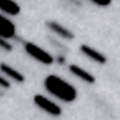
|
Now it is 17.3 mag (Aug. 5, A. Waszczak). It was observed at 18 mag in 2012. It will be observable at 17 mag in excellent condition in 2013.
Date(TT) R.A. (2000) Decl. Delta r Elong. m1 Best Time(A, h)
Aug. 24 0 6.93 9 7.3 3.508 4.374 144 17.1 1:59 (180, 46)
Aug. 31 23 59.07 7 14.6 3.450 4.381 154 17.1 1:24 (180, 48)
|
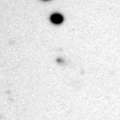
|
Now it is 17.5 mag (Aug. 4, J. Gonzalez). It tends to be brightest 4 months after the perihelion passage. It will reach up to 15.5 mag from autumn to winter, and will be observable in excellent condition.
Date(TT) R.A. (2000) Decl. Delta r Elong. m1 Best Time(A, h)
Aug. 24 5 2.53 15 56.2 1.849 1.861 74 17.4 5:05 (211, 33)
Aug. 31 5 17.08 16 11.1 1.799 1.872 78 17.2 4:56 (210, 33)
|

|
Now it is 18.3 mag (Aug. 7, P. Bacci, L. Tesi, G. Fagioli). It keeps 17 mag for a long time from 2013 summer to early 2015.
Date(TT) R.A. (2000) Decl. Delta r Elong. m1 Best Time(A, h)
Aug. 24 2 13.34 17 58.0 2.702 3.242 113 17.3 4:05 (180, 37)
Aug. 31 2 14.90 18 8.1 2.605 3.229 119 17.2 3:39 (180, 37)
|

|
First return of a new periodic comet discovered in 2005. It was expected to be observable at 17 mag for a long time from 2013 to 2014. However, it has not been recovered yet. Actually, it is much fainter than predicted, fainter than 20 mag (Aug. 6, Jean-Francois Soulier).
Date(TT) R.A. (2000) Decl. Delta r Elong. m1 Best Time(A, h)
Aug. 24 16 46.85 -15 51.3 2.827 3.185 101 17.3 18:59 (163, 70)
Aug. 31 16 51.00 -16 19.4 2.917 3.181 95 17.4 19:04 (145, 68)
|

|
Now it is 17.6 mag (Aug. 9, K. Hills). It keeps 17 mag for a long time from 2012 to 2013, and will be observable in good condition in the Southern Hemisphere. It is not observable at all in the Northern Hemisphere.
Date(TT) R.A. (2000) Decl. Delta r Elong. m1 Best Time(A, h)
Aug. 24 23 57.45 -77 26.0 4.611 5.083 112 17.4 1:51 ( 0, 48)
Aug. 31 23 19.03 -77 33.9 4.651 5.099 110 17.4 0:45 ( 0, 48)
|

|
It was observed at 15-16 mag in 2012. Now it is fading. It has already faded down to 16.5 mag (Aug. 8, S. Shurpakov). It will be fainter than 18 mag in autumn. It locates low in the Southern Hemisphere.
Date(TT) R.A. (2000) Decl. Delta r Elong. m1 Best Time(A, h)
Aug. 24 1 57.50 36 38.3 3.968 4.396 108 17.4 3:49 (180, 18)
Aug. 31 1 50.68 35 53.3 3.892 4.432 116 17.5 3:15 (180, 19)
|
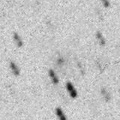
|
Because it is a very distant comet, it will be fading very slowly. However, now it is 19.2 mag, fainter than this ephemeris (Aug. 1, J. Jahn).
Date(TT) R.A. (2000) Decl. Delta r Elong. m1 Best Time(A, h)
Aug. 24 23 19.34 10 2.8 8.894 9.805 152 17.7 1:11 (180, 45)
Aug. 31 23 17.73 9 41.9 8.864 9.812 158 17.7 0:42 (180, 45)
|

|
Now it is 17.7 mag (July 20, A. Novichonok, T. Prystavski). It will brighten up to 14 mag around the perihelion passage in 2019. In 2013, it will be observable in good condition at 17.5 mag from summer to winter. It locates low in the Southern Hemisphere.
Date(TT) R.A. (2000) Decl. Delta r Elong. m1 Best Time(A, h)
Aug. 24 3 11.92 26 10.8 13.900 14.078 98 17.7 5:03 (180, 29)
Aug. 31 3 11.64 26 21.5 13.758 14.049 104 17.7 4:35 (180, 29)
|
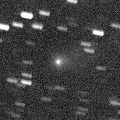
|
It brightened up to 15.5 mag in 2012 summer. Although it has already passed the perihelion, it tends to become brightest after the perihelion passage. Now it is 17.1 mag (Aug. 9, Catalina Sky Survey).
Date(TT) R.A. (2000) Decl. Delta r Elong. m1 Best Time(A, h)
Aug. 24 22 18.97 -22 39.3 2.755 3.751 168 17.7 0:11 (180, 78)
Aug. 31 22 14.59 -23 6.4 2.785 3.768 164 17.8 23:35 (180, 78)
|

|
Now it is 18.0 mag (Aug. 14, V. Gerke, S. Plaksa). It will be observable at 17 mag in excellent condition from autumn to winter.
Date(TT) R.A. (2000) Decl. Delta r Elong. m1 Best Time(A, h)
Aug. 24 2 55.15 20 55.2 2.290 2.708 103 17.9 4:46 (180, 34)
Aug. 31 3 0.45 21 14.9 2.195 2.695 108 17.8 4:24 (180, 34)
|

|
Now it is 18.2 mag (Aug. 14, V. Gerke, S. Plaksa). It will brighten up to 16.5 mag and will be observable in good condition from autumn to winter.
Date(TT) R.A. (2000) Decl. Delta r Elong. m1 Best Time(A, h)
Aug. 24 2 50.45 18 29.9 1.836 2.315 105 18.0 4:41 (180, 36)
Aug. 31 2 57.80 18 24.1 1.743 2.296 110 17.8 4:21 (180, 37)
|
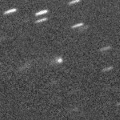
|
Now it is 18.1 mag (Aug. 9, Catalina Sky Survey). It has been observed at 17 mag for a long time from 2009 to 2012. It is also observable at 18 mag in good condition in 2013.
Date(TT) R.A. (2000) Decl. Delta r Elong. m1 Best Time(A, h)
Aug. 24 21 43.59 6 46.8 8.403 9.364 160 17.8 23:31 (180, 48)
Aug. 31 21 39.25 6 21.7 8.435 9.385 159 17.9 22:59 (180, 49)
|

|
Now it is 17.5 mag (Aug. 5, Jean-Francois Soulier). It has brightened in outburst up to 14 mag twice, in 2006 January and 2011 May. It will pass the perihelion in 2015. It keeps observable at 17 mag for a long time after this.
Date(TT) R.A. (2000) Decl. Delta r Elong. m1 Best Time(A, h)
Aug. 24 18 49.82 -18 31.1 5.775 6.482 130 17.9 20:38 (180, 74)
Aug. 31 18 49.05 -18 37.1 5.850 6.468 123 17.9 20:10 (180, 74)
|
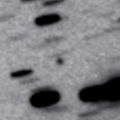
|
Now it is 17.8 mag (July 31, W. Hasubick). It keeps observable at 18 mag for a long time from 2013 to 2016. It keeps locating high in the Northern Hemisphere. It keeps locating very low in the Southern Hemipshere.
Date(TT) R.A. (2000) Decl. Delta r Elong. m1 Best Time(A, h)
Aug. 24 18 53.74 26 41.6 6.359 6.904 118 17.9 20:42 (180, 28)
Aug. 31 18 49.30 26 27.8 6.407 6.888 114 17.9 20:10 (180, 29)
|

|
First return of a new periodic comet discovered in 1998. Now it is 18.6 mag (July 24, Siding Spring Survey). It is fainter than originally expected by 2 mag. It was expected to be observable at 15.5 mag in good condition from 2013 autumn to early 2014. But actually, it will be 17 mag at best.
Date(TT) R.A. (2000) Decl. Delta r Elong. m1 Best Time(A, h)
Aug. 24 2 10.49 -21 39.6 2.189 2.857 122 18.3 4:02 (180, 77)
Aug. 31 2 12.77 -22 27.7 2.112 2.832 126 18.2 3:36 (180, 77)
|
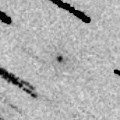
|
Although it was expected to be bright as 16 mag, actually it was so faint as 18.5 mag, fainter than expected by 2-3 mag (Aug. 15, Michael Jager). It will be observable in good condition from summer to autumn, however, it will be only 18-19 mag at best.
Date(TT) R.A. (2000) Decl. Delta r Elong. m1 Best Time(A, h)
Aug. 24 3 52.67 22 27.0 1.005 1.426 90 18.6 5:05 (190, 32)
Aug. 31 4 10.24 23 17.7 0.988 1.444 92 18.6 4:56 (190, 31)
|
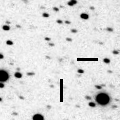
|
It was discovered in 1819, and re-discovered in 2003. Although it was predicted to be extremely faint as 26 mag, it unusually brightened up to 17.5 mag in outburst in early July (July 6, Hidetaka Sato). However, no observations have been reported since mid July. It will pass the perihelion in 2014 August, and will approach to the sun down to 0.96 a.u. The brightness is predicted to be 23 mag at best. However, if the cometary activity continues, it may be observed brighter.
Date(TT) R.A. (2000) Decl. Delta r Elong. m1 Best Time(A, h)
Aug. 24 18 57.34 -28 9.2 2.875 3.626 131 19.3 20:46 (180, 83)
Aug. 31 18 53.78 -28 8.7 2.922 3.587 124 19.5 20:15 (180, 83)
|
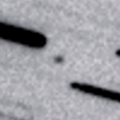
|
It was expected to brighten up to 15 mag in 2013 summer. But actually, it is so faint as 19.5 mag, fainter than expected by 4 mag (July 2, J. F. Soulier).
Date(TT) R.A. (2000) Decl. Delta r Elong. m1 Best Time(A, h)
Aug. 24 18 49.47 0 22.5 1.346 2.128 128 19.4 20:36 (180, 55)
Aug. 31 18 24.62 -3 35.4 1.487 2.145 117 19.7 19:44 (180, 59)
|
|
![]()
 C/2012 S1 ( ISON )
C/2012 S1 ( ISON ) C/2013 G5 ( Catalina )
C/2013 G5 ( Catalina ) C/2013 N4 ( Borisov )
C/2013 N4 ( Borisov ) C/2011 L4 ( PanSTARRS )
C/2011 L4 ( PanSTARRS ) P/2013 CU129 ( PanSTARRS )
P/2013 CU129 ( PanSTARRS ) C/2010 S1 ( LINEAR )
C/2010 S1 ( LINEAR ) 246P/2010 V2 ( NEAT )
246P/2010 V2 ( NEAT ) (596) Scheila
(596) Scheila C/2006 S3 ( LONEOS )
C/2006 S3 ( LONEOS ) C/2011 J2 ( LINEAR )
C/2011 J2 ( LINEAR ) C/2012 L2 ( LINEAR )
C/2012 L2 ( LINEAR ) 29P/Schwassmann-Wachmann 1
29P/Schwassmann-Wachmann 1 C/2012 K1 ( PanSTARRS )
C/2012 K1 ( PanSTARRS ) 290P/2013 N1 ( Jager )
290P/2013 N1 ( Jager ) 154P/Brewington
154P/Brewington C/2012 S3 ( PanSTARRS )
C/2012 S3 ( PanSTARRS ) 26P/Grigg-Skjellerup
26P/Grigg-Skjellerup 117P/Helin-Roman-Alu 1
117P/Helin-Roman-Alu 1 C/2013 E2 ( Iwamoto )
C/2013 E2 ( Iwamoto ) C/2012 X1 ( LINEAR )
C/2012 X1 ( LINEAR ) 2P/Encke
2P/Encke C/2009 F4 ( McNaught )
C/2009 F4 ( McNaught ) P/2013 J2 ( McNaught )
P/2013 J2 ( McNaught ) C/2011 R1 ( McNaught )
C/2011 R1 ( McNaught ) 17P/Holmes
17P/Holmes 63P/Wild 1
63P/Wild 1 257P/2012 F4 ( Catalina )
257P/2012 F4 ( Catalina ) C/2013 A1 ( Siding Spring )
C/2013 A1 ( Siding Spring ) C/2011 F1 ( LINEAR )
C/2011 F1 ( LINEAR ) 102P/Shoemaker 1
102P/Shoemaker 1 C/2012 J1 ( Catalina )
C/2012 J1 ( Catalina ) P/2012 F2 ( PanSTARRS )
P/2012 F2 ( PanSTARRS ) C/2011 O1 ( LINEAR )
C/2011 O1 ( LINEAR ) 98P/Takamizawa
98P/Takamizawa C/2012 S4 ( PanSTARRS )
C/2012 S4 ( PanSTARRS ) 84P/Giclas
84P/Giclas 119P/Parker-Hartley
119P/Parker-Hartley P/2005 L1 ( McNaught )
P/2005 L1 ( McNaught ) C/2012 C1 ( McNaught )
C/2012 C1 ( McNaught ) C/2012 A2 ( LINEAR )
C/2012 A2 ( LINEAR ) C/2012 Q1 ( Kowalski )
C/2012 Q1 ( Kowalski ) C/2010 U3 ( Boattini )
C/2010 U3 ( Boattini ) 152P/Helin-Lawrence
152P/Helin-Lawrence 291P/2013 N2 ( NEAT )
291P/2013 N2 ( NEAT ) P/2013 O2 ( PanSTARRS )
P/2013 O2 ( PanSTARRS ) C/2008 S3 ( Boattini )
C/2008 S3 ( Boattini ) 174P/(60558) 2000 EC98 ( Echeclus )
174P/(60558) 2000 EC98 ( Echeclus ) C/2012 K8 ( Lemmon )
C/2012 K8 ( Lemmon ) 292P/2013 O1 ( Li )
292P/2013 O1 ( Li ) 184P/Lovas 2
184P/Lovas 2 289P/Blanpain
289P/Blanpain C/2012 V1 ( PanSTARRS )
C/2012 V1 ( PanSTARRS )![]()



















































